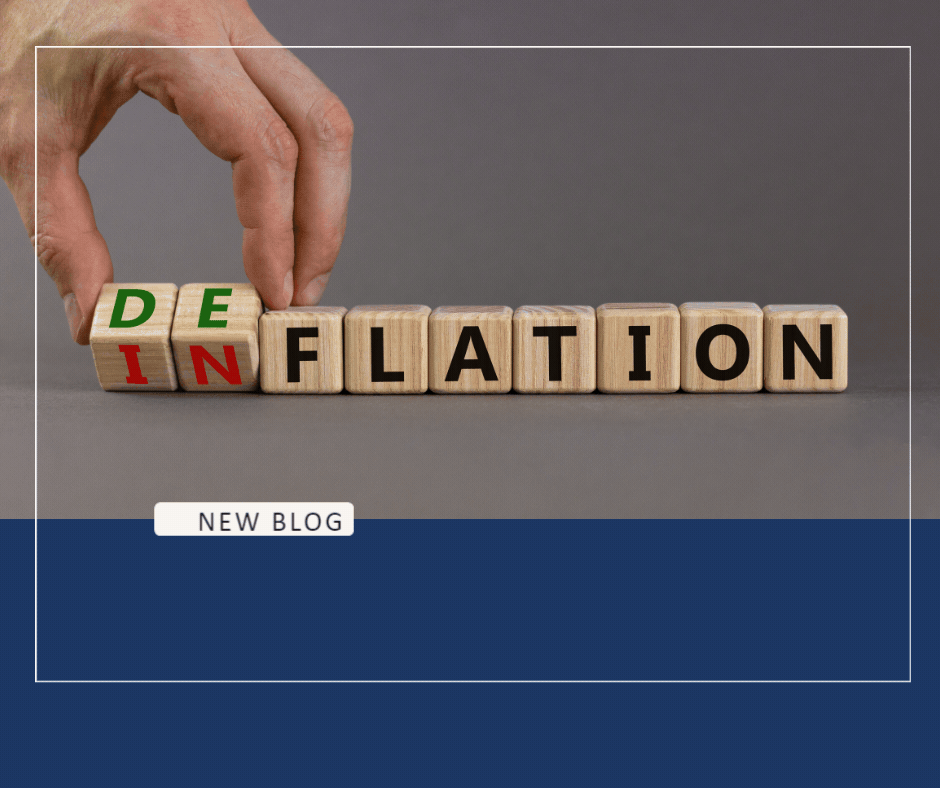Inflation vs. Deflation: Navigating Economic Uncertainty in 2024

In 2024's uncertain economic landscape, Resource Employment Solutions delves into the nuanced interplay between inflation and deflation. The article underscores three key points: the profound impact of these forces on consumer behavior and businesses, the role of policy responses in shaping economic outcomes, and the necessity of proactive planning amidst ongoing uncertainty. Through real-world examples, it elucidates how inflationary pressures prompt accelerated consumer spending and challenge businesses to maintain profitability, while deflationary trends necessitate strategic adjustments to stimulate demand. As the economic outlook remains uncertain, the article advocates for informed decision-making and resilience in navigating the complexities of inflation and deflation. By understanding these dynamics, individuals and businesses can position themselves for success amidst fluctuating market conditions.
Inflation and deflation represent two opposing forces that influence the purchasing power of currencies, prices of goods and services, and overall economic stability. Inflation occurs when the general price level of goods and services rises over time, leading to a decrease in the purchasing power of money. On the other hand, deflation refers to a decrease in the general price level of goods and services, often accompanied by economic contraction and reduced consumer spending.
Amid economic uncertainty in 2024, Resource Employment Solutions stands as a beacon of guidance for individuals and businesses seeking to navigate the complexities of inflation and deflation. With our expertise and tailored solutions, we empower our clients to adapt and thrive in a rapidly evolving economic environment.
Impact on Consumer Behavior
Inflation and deflation exert significant influence on consumer behavior, shaping spending habits and investment decisions. During periods of inflation, consumers may feel pressured to make purchases sooner rather than later, anticipating further price increases. This can lead to increased consumer spending, driving economic growth in the short term. Conversely, deflationary pressures may prompt consumers to postpone purchases in anticipation of lower prices in the future, resulting in decreased consumer spending and economic stagnation.
Implications for Businesses
The impact of inflation and deflation extends beyond consumer behavior to businesses, affecting production costs, pricing strategies, and profitability. Inflationary pressures can drive up the cost of raw materials, labor, and other inputs, squeezing profit margins for businesses across various industries. To mitigate the impact of inflation, businesses may resort to raising prices, leading to potential demand contraction and competitive challenges.
In contrast, deflationary forces can present a different set of challenges for businesses, as declining prices erode revenue streams and profitability. To maintain market share and stimulate demand, businesses may engage in price wars or cost-cutting measures, potentially compromising product quality or customer service.
Policy Responses and Economic Outlook
Central banks and policymakers play a critical role in addressing inflationary and deflationary pressures through monetary and fiscal policy measures. In response to inflationary concerns, central banks may raise interest rates to curb excessive borrowing and spending, thereby reducing inflationary pressures. Conversely, during deflationary periods, central banks may implement expansionary monetary policies, such as lowering interest rates and increasing money supply, to stimulate economic activity and encourage borrowing and investment.
Looking ahead, the economic outlook remains uncertain, with the potential for continued volatility and fluctuations in inflation and deflation. Geopolitical tensions, supply chain disruptions, and technological advancements are among the factors contributing to economic uncertainty in 2024 and beyond. In this environment, proactive planning and strategic decision-making are essential for individuals and businesses to adapt to changing market conditions and thrive amidst uncertainty.
In the ever-changing landscape of economic uncertainty in 2024, understanding the dynamics of inflation and deflation is crucial for individuals and businesses alike. As we have explored, these opposing forces exert significant influence on consumer behavior, business operations, and overall economic stability. While the future may remain uncertain, proactive planning and strategic decision-making can empower individuals and businesses to adapt and thrive amidst economic fluctuations.
Written on behalf of RES.
The RES Onboarding Process
Our commitment to you is deeper than just providing a list of potential candidates. We are committed to designing and implementing the most effective staffing strategy for you. Here is what you can expect when you choose Resource Employment Solutions as your recruiting and staffing partner.




When you connect with Resource Employment Solutions, you will be matched with an account management team who specializes in placing top talent within your industry. You will have a dedicated recruiter or recruiting team assigned and they will remain your point of contact to understand your business and address all your staffing needs.
Frequently Asked Questions
Inflation erodes the purchasing power of money, leading to rising prices for goods and services, which can strain household budgets. On the other hand, deflation can result in lower prices, but it may also lead to reduced consumer spending and economic stagnation.
Businesses facing inflationary pressures may increase prices to offset rising costs, potentially impacting consumer demand. Conversely, during deflationary periods, businesses may implement cost-cutting measures or engage in price wars to maintain competitiveness.
Central banks employ monetary policy measures such as adjusting interest rates and money supply to manage inflation and deflation. For instance, they may raise interest rates to combat inflation or lower rates to stimulate economic activity during deflationary periods.


